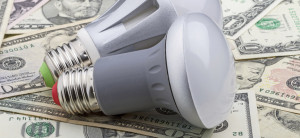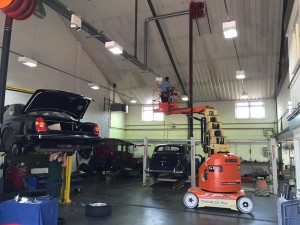LED Price/Cost Analysis.
 As an electrician and Martin County electrical contractor, one of the topics I am asked about often is whether LEDs are worth the investment. Circumstances dictate the correct answer. Many factors have to be considered in making that decision. To a large extent the answer is about “pay me now or pay me later.” It’s about upfront cost vs. long term economic savings. There are vast technological differences between incandescent bulbs and light-emitting diode (LED). Yet, light is light. When you flip the switch, whether LED or incandescent, all you get is light.
As an electrician and Martin County electrical contractor, one of the topics I am asked about often is whether LEDs are worth the investment. Circumstances dictate the correct answer. Many factors have to be considered in making that decision. To a large extent the answer is about “pay me now or pay me later.” It’s about upfront cost vs. long term economic savings. There are vast technological differences between incandescent bulbs and light-emitting diode (LED). Yet, light is light. When you flip the switch, whether LED or incandescent, all you get is light.
A light-emitting diode is a type of solid-state lighting that uses a semiconductor to convert electricity into light. LED bulbs can be six to seven times more energy efficient than conventional incandescent lights and cut energy use by more than 80 percent. Unlike incandescent bulbs, which release 90% of their energy as heat, LEDs use energy much more efficiently. A recent Energy Department study determined that LEDs have a much smaller environmental impact, compared to incandescent bulbs. They also have an edge over compact fluorescent lights (CFLs) in regards to those same factors. Good-quality LED bulbs can have a useful life of 25,000 hours or more — meaning they can last more than 25 times longer than traditional light bulbs. That is a life of more than three years if run 24 hours a day, seven days a week.
So what’s not to like? It’s about price—LEDs cost more, significantly more, though cost is trending decidedly downward.
LEDs: a cost-benefit analysis.
 Like all the decisions you make, you need to analyze if the higher cost of LED lighting up front is worth it in the long term. A LED lighting system can cost three times what a traditional T8 fluorescent tube system costs. But you have to factor in your application and maintenance costs. LED lighting has won acceptance in outdoor applications because it is more rugged and low maintenance. Fluorescent lighting is the current standard for overhead lighting in homes, offices, warehouses and retail establishments.issue.
Like all the decisions you make, you need to analyze if the higher cost of LED lighting up front is worth it in the long term. A LED lighting system can cost three times what a traditional T8 fluorescent tube system costs. But you have to factor in your application and maintenance costs. LED lighting has won acceptance in outdoor applications because it is more rugged and low maintenance. Fluorescent lighting is the current standard for overhead lighting in homes, offices, warehouses and retail establishments.issue.
Many retailers use halogen spotlights to showcase displays, but halogen burns “hot” and needs frequent replacing. LEDs also provide bright directional light and last a very, very long time, saving on labor as well as energy. Extended use interior lighting paybacks can be in the 2-4 year range when LEDs are substituted. The new LED technology has better performance and more light output than ever before.
If you are investing in your home or office, and plan to be there for a long time, the higher cost of LEDs makes sense. But if you are renting, or expecting to move in a few years, you might not want to pay more for the most efficient lighting technology. Because LEDs give you the most value where you need light the most, you can always consider a combination of LED and other types of bulbs.



Feb 15 2015
LED Price/Cost Analysis.
A light-emitting diode is a type of solid-state lighting that uses a semiconductor to convert electricity into light. LED bulbs can be six to seven times more energy efficient than conventional incandescent lights and cut energy use by more than 80 percent. Unlike incandescent bulbs, which release 90% of their energy as heat, LEDs use energy much more efficiently. A recent Energy Department study determined that LEDs have a much smaller environmental impact, compared to incandescent bulbs. They also have an edge over compact fluorescent lights (CFLs) in regards to those same factors. Good-quality LED bulbs can have a useful life of 25,000 hours or more — meaning they can last more than 25 times longer than traditional light bulbs. That is a life of more than three years if run 24 hours a day, seven days a week.
So what’s not to like? It’s about price—LEDs cost more, significantly more, though cost is trending decidedly downward.
LEDs: a cost-benefit analysis.
Many retailers use halogen spotlights to showcase displays, but halogen burns “hot” and needs frequent replacing. LEDs also provide bright directional light and last a very, very long time, saving on labor as well as energy. Extended use interior lighting paybacks can be in the 2-4 year range when LEDs are substituted. The new LED technology has better performance and more light output than ever before.
If you are investing in your home or office, and plan to be there for a long time, the higher cost of LEDs makes sense. But if you are renting, or expecting to move in a few years, you might not want to pay more for the most efficient lighting technology. Because LEDs give you the most value where you need light the most, you can always consider a combination of LED and other types of bulbs.
By Glenn_G • Electrical Contractor, Retrofit Lighting • 0